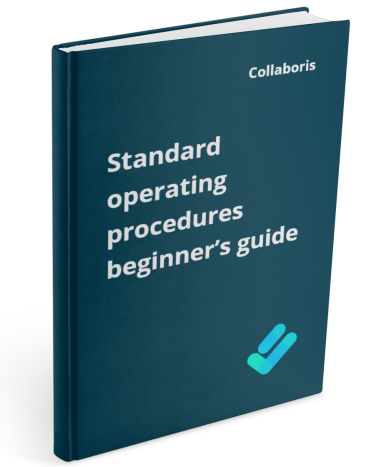Policy Approval Workflow Automated policy approval workflows offer several benefits that can significantly enhance ...
How to Increase Employee Engagement in Policy Management (part 1)

The Connection between Employee Engagement and Compliance
Employee engagement plays a crucial role in ensuring policy compliance within an organization. When employees are engaged, they are more likely to understand, follow, and support the companies policies and procedures.
Engaged employees have a deeper sense of connection and commitment to their work and the organization as a whole. They feel valued and recognized for their contributions, which fosters a positive work environment. In such an environment, employees are more motivated to adhere to company policies and procedures.
When employees are engaged, they are more likely to take the time to understand the policies and procedures that govern their work. They actively seek out information and clarification, ensuring that they have a clear understanding of what is expected of them. This understanding helps them make informed decisions and take appropriate actions in line with company policies.
Engaged employees are also more likely to support and promote policies and procedures to their colleagues. They act as advocates, encouraging others to comply with the established guidelines. Their enthusiasm and belief in the importance of these policies can influence their peers to also embrace and adhere to them.
On the other hand, disengaged employees may not fully understand or appreciate the significance of policies and procedures. They may view them as unnecessary or burdensome, leading to non-compliance or even resistance. This lack of engagement can result in increased risks, decreased productivity, and potential legal issues for the organization.
Involving Employees in Policy Management
Involving employees in the policy creation and review process can bring numerous benefits to an organization. By actively engaging employees in these processes, organizations can tap into their valuable insights, experiences, and perspectives. This inclusive approach fosters a sense of ownership and empowerment among employees, leading to increased job satisfaction and morale. Additionally, involving employees in policy creation and review can result in policies that are more relevant, practical, and aligned with their needs.
Methods for Soliciting Employee Input
There are several effective methods for soliciting employee input during the policy creation and review process. One common method is conducting surveys. Surveys allow organizations to gather feedback from a large number of employees quickly and efficiently. These surveys can be designed to collect specific information or opinions on various policy-related topics.
Another method is organizing focus groups. Focus groups provide a platform for employees to engage in open discussions and share their thoughts, ideas, and concerns regarding existing policies or proposed changes. This interactive approach encourages collaboration and allows for a deeper exploration of different perspectives.
Additionally, suggestion boxes can be implemented as a simple yet effective way to gather employee input. These physical or digital boxes provide a confidential space for employees to submit their suggestions, ideas, or concerns related to policies. This method ensures anonymity and encourages employees who may be hesitant to speak up in other settings.
The Benefits of Involving Employees
When employees are involved in the policy creation and review process, it leads to policies that are more relevant, practical, and aligned with their needs. Employees possess firsthand knowledge of the challenges and opportunities within their roles and departments. By including them in the decision-making process, organizations can leverage this expertise to develop policies that address real-world issues and enhance operational efficiency.
Furthermore, involving employees fosters a sense of ownership and commitment to the policies. When employees have a voice in shaping the rules and regulations that govern their work environment, they are more likely to embrace and adhere to these policies. This increased buy-in contributes to a positive organizational culture and promotes a sense of shared responsibility.
Moreover, involving employees in policy creation and review can improve employee morale and job satisfaction. When employees feel valued and heard, it enhances their overall engagement and motivation. They become more invested in the success of the organization and are more likely to contribute their best efforts.
Involving employees in the policy creation and review process brings numerous benefits to organizations. By utilizing methods such as surveys, focus groups, and suggestion boxes, organizations can gather valuable input from employees. This inclusive approach leads to policies that are more relevant, practical, and aligned with the needs of the workforce. Ultimately, involving employees fosters a positive work environment, enhances employee morale, and contributes to the overall success of the organization.
Get your free Standard Operating Procedures guide
Creating Standard Operating Procedures for your organisation doesn't have to be complicated. This guide will introduce you to the whole lifecycle from creation to training and distribution.
Creating Accessibility for Policies and Procedures
Emphasizing the Significance of Easy Access to Policies and Procedures
Having easy access to policies and procedures is of utmost importance in any organization. It ensures that employees have the necessary information readily available to perform their tasks effectively and efficiently. When policies and procedures are easily accessible, it promotes a culture of compliance and accountability within the organization. Additionally, employee engagement will increase as a result.
The Importance of Clear Organization, User-Friendly Language, and Intuitive Navigation
Clear organization, user-friendly language, and intuitive navigation are key elements in making policies and procedures accessible to all employees. By organizing policies and procedures in a logical and structured manner, employees can quickly locate the information they need without wasting time searching through lengthy documents.
Using user-friendly language is equally important. Policies and procedures should be written in a way that is easy to understand, avoiding complex jargon or technical terms. This ensures that employees from various backgrounds and levels of expertise can comprehend and apply the information effectively.
Intuitive navigation further enhances accessibility. By implementing a user-friendly interface and search functionality, employees can easily navigate through the policy platform, saving time and effort in finding the relevant policies and procedures.
The Benefits of Using a Centralized Platform for Policy Distribution and Updates
Implementing a centralized platform for policy distribution and updates offers numerous benefits. Firstly, it ensures consistency across the organization by providing a single source of truth for policies and procedures. This eliminates the confusion that may arise from outdated or conflicting information.
Secondly, a centralized platform allows for efficient updates and version control. When policies and procedures change, they can be easily updated on the platform, ensuring that all employees have access to the most up-to-date information. This reduces the risk of employees unknowingly following outdated practices.
Furthermore, a centralized platform enables effective communication and collaboration. It allows for feedback and suggestions from employees, fostering a culture of continuous improvement. Employees can also receive notifications about policy changes, ensuring that they stay informed and compliant.
In conclusion, easy access to policies and procedures is crucial for organizations. By emphasizing clear organization, user-friendly language, and intuitive navigation, employees can easily find and understand the information they need. Implementing a centralized platform further enhances accessibility, consistency, and collaboration within the organization.
Clear Communication and Training
Effective communication plays a crucial role in promoting policy compliance within an organization. When policies are communicated clearly and effectively, employees are more likely to understand and adhere to them. This not only ensures that the organization operates in accordance with regulations and guidelines but also helps maintain a positive work environment.
Clear and concise policy language is essential for employees to understand their responsibilities and obligations. Policies written in complex or convoluted language can lead to confusion and misunderstandings. By using simple and straightforward language, organizations can ensure that employees comprehend the policies and know what is expected of them.
Policy Training
Incorporating policy training into onboarding and ongoing training sessions is another effective way to promote comprehension and adherence. During the onboarding process, new employees should be introduced to the organization's policies and provided with comprehensive training materials. This will help them understand the policies from the beginning and establish a strong foundation for compliance.
Ongoing training sessions are equally important to reinforce policy understanding and address any updates or changes. Regular training sessions can serve as reminders and refreshers, ensuring that employees stay up-to-date with the policies and any modifications. This continuous reinforcement helps embed policy compliance into the organizational culture.
Furthermore, it is crucial to make policy training engaging and interactive. Utilizing various training methods such as presentations, case studies, and quizzes can enhance employee comprehension and retention. By making the training sessions interesting and interactive, employees are more likely to pay attention and grasp the key concepts.
Overall, effective communication, clear policy language, and incorporating policy training into onboarding and ongoing training sessions are all vital components in promoting policy compliance. By prioritizing these aspects, organizations can foster a culture of understanding, adherence, and accountability among their employees. An additional benefit is the increased engagement of employees.
Go to part 2 of this post where we consider the benefits of gamification and interactive learning, recognition and rewards and how to use a continuous feedback loop.
You may also like:
January 17, 2025
January 7, 2025
Creating policy review reminders in Office 365 You might want to set up a ...
December 19, 2024
Podcast: Implementing effective healthcare procedures Implementing effective healthcare procedures is an ongoing process. It ...
December 19, 2024
Podcast: 10 Powerful Strategies for Employee ComplianceOrganizations face challenges in ensuring employee compliance with ...
December 8, 2024
AI Warns About Itself: How I Asked AI to Create a Podcast on the ...
November 4, 2024
Benefits of writing SOP's In any organization, standard operating procedures (SOPs) are critical to ...

